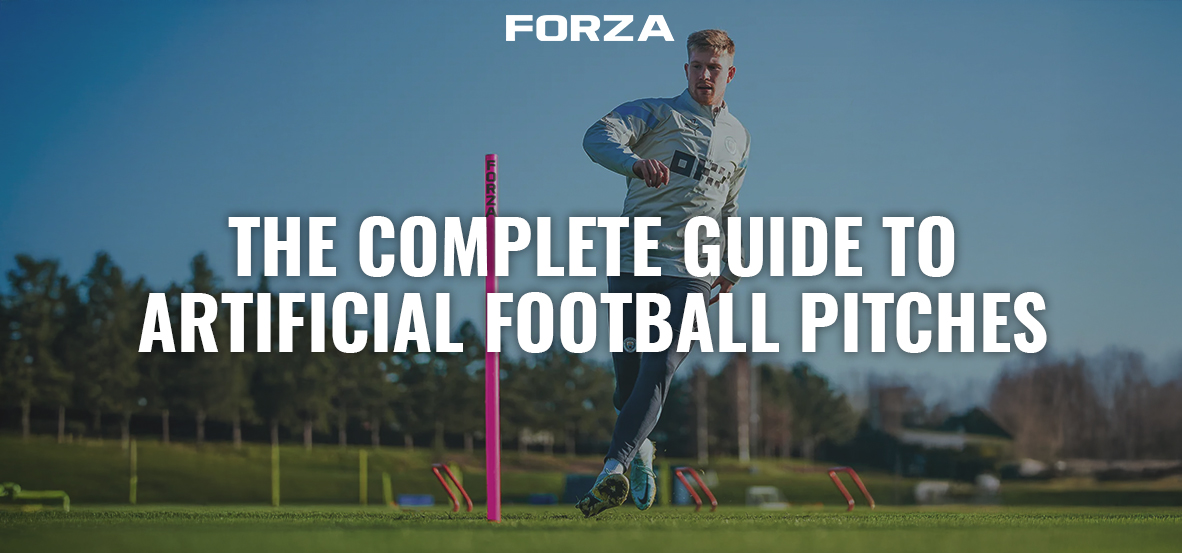From the origins of AstroTurf turf, to the benefits of 4G pitches, our complete guide covers everything you could ever want to know about artificial football pitches!
Easier to maintain than traditional grass pitches, artificial football pitches were created initially to overcome the issues with grass surfaces either freezing over in the winter months, or becoming mud-ridden and uneven before spring comes along. Artificial turf pitches were also developed so teams could play indoors – avoiding the rain and freezing temperatures which can lead to injuries and poor playing conditions.
First seen on American baseball pitches, English football was introduced to the artificial playing surface when QPR converted its Loftus Road pitch to an artificial Omniturf surface in 1981. Often referred to as “plastic pitches”, Preston North End and Oldham also adopted an artificial pitch for a number of years, until they were banned from top-flight English football in 1991, and the entire Football League in 1995. The ban was due to concerns surrounding the bounce of the ball, player’s footing, and fears regarding injuries.
Held in Canada, the 2015 Women’s Football World Cup was controversially played entirely on artificial pitches. Due to the extreme winter in Canada, real grass football pitches are highly impractical and as such the vast majority of football pitches are artificial. FIFA allows the use of artificial pitches as long as the meet certain criteria and standards in accordance with their 2* certification.
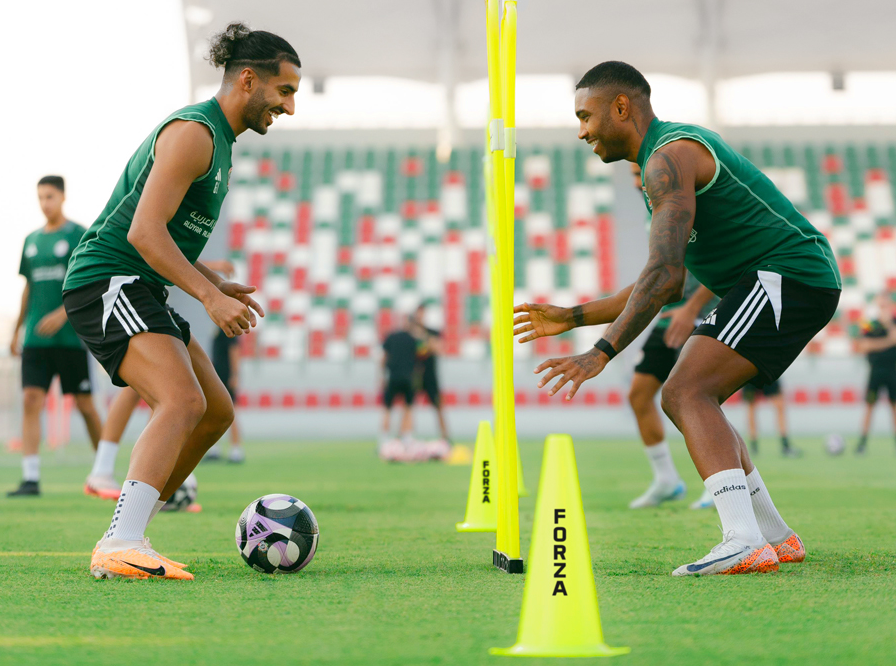
| Artificial & Natural Football Pitch Playing Surface Comparison | |||
| Football Pitch Surface | Description | Benefits | Limitations |
| Natural | Traditional real grass football pitch | The standard of football pitches in terms of bounce and roll of the ball and the grip/footing it affords players | High level of maintenance. Can freeze & become muddy. Matches can be cancelled due to weather conditions. |
| Astroturf (1G)* | Non-infilled surface | All weather surface. Highly durable. |
Abrasive surface with unpredictable bounce & roll. |
| 2G | Very short (13mm-24mm) synthetic grass. Consists of synthetic grass and sand infill | All weather surface. Extremely durable. Limited maintenance required. |
Abrasive surface. Not approved by most football governing bodies. |
| 3G | Consists of synthetic grass, sand and rubber infill. Grass is usually 35mm-65mm in height. The most popular form of artificial pitch. | Can be approved for competitive football under the FIFA 2* system. All weather surface. Limited maintenance required. |
Despite independent studies confirming player safety, controversy remains over the risk of injury. |
| 4G & 5G | Uses a “yarn & tuft” design. Synthetic grass is laid directly onto a shock-absorbing pad. | 5G said to replicate the look and feel of a real football pitch better than 4G. All weather surface. |
4G & 5G pitches are not recognised by football governing bodies. |
| 6G | Advanced artificial grass surface with a unique multi-layer structure. | Enhanced safety. Low maintenance compared to other surfaces. Extremely durable. |
Not officially approved by governing bodies. Higher installation costs compared to other artificial surfaces. |
| Hybrid Pitches | 95% real grass reinforced with 5% synthetic fibres | Looks and feels almost identical to a pitch that is 100% real. Highly durable compared to a real football pitch. |
Expensive compared to real turf football pitches. No long term studies on how the synthetic fibres interact with the turf or root system of the real grass. |
Types of Artificial Football Pitches
What are artificial grass pitches?
“Artificial grass” is an umbrella term that encompasses any synthetic football pitch surface. Astroturf is regarded as the original type of artificial pitch, followed by 2G and 3G pitches. Although 4G, 5G and 6G pitches now exist, these are not formally recognised by organisations including UEFA.
Also known as “1G” pitches, Astroturf was originally developed in the 1960s, for the baseball team the Houston Astros to use. The Astros pitch was lacking grass due to the limited amount of light that the field was exposed to. Marketed under the name “AstroTurf”, soon after the artificial grass was installed in the Astrodome, several more baseball teams and then later American Football teams installed similar playing surfaces.
It wasn’t until the 1980s that AstroTurf reached UK football teams, with QPR installing an artificial pitch in 1981. Whilst 2G and 3G pitches are infilled with sand and in the case of 3G – rubber granules, AstroTurf pitches have no infill.
What is a 2G football pitch?
Used for recreational football pitches and multi-use sports fields, 2G or “Second Generation” pitches consist of artificial turf that is infilled with silica sand. 2G pitches sometimes have a shock-absorbing underlay to minimise the impact of falls and trips.
2G is synthetic grass that is shorter and denser than earlier AstroTurf pitches and requires a smaller volume of sand. The turf is woven and knitted so that the sand infill is kept within the pile (the area from the “carpet” or artificial grass backing to the top of the synthetic grass fibres).
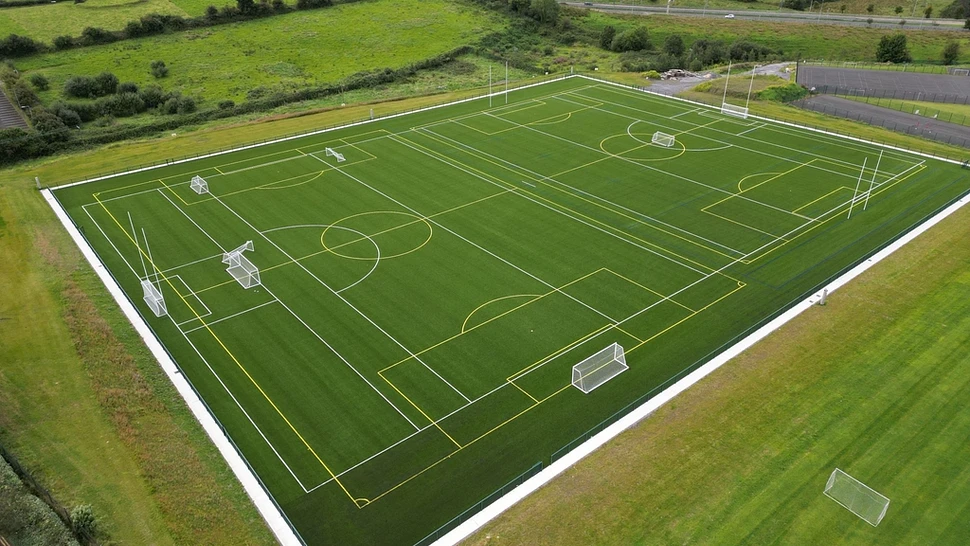
What is a 3G football pitch?
3G pitches are the third generation of artificial football pitch technology. 3G pitches consist of at least 3 layers or elements – synthetic grass fibres, sand infill and rubber infill. The rubber pellets help to keep the synthetic blades of grass upright and make the surface less abrasive and likely to burn or scratch players when they dive, fall or make sliding tackles.
Some higher quality 3G pitches also feature a shock-absorbing underlay or pad. 3G pitches are said to replicate the bounce and ball roll of a natural pitch more closely than 2G pitches and those that incorporate a shock-absorbing layer are said to significantly reduce the risk of injuries.
With a pile/synthetic grass height of between 35mm and 65mm, 3G pitches are extremely popular for artificial football, rugby and American Football pitches. 3G pitches that adhere to the FIFA 2 Star criteria, can be used in regulated matches which is one advantage of 3G pitches over 4G.
3G surfaces are extremely durable and regularly used for training ground pitches as well as ‘official’ pitches used for regulated matches. Requiring less maintenance than a real pitch surface, they are highly unlikely to get waterlogged and they won’t dry out in the summer months.
In regards to 3G pitches, a Position Statement published by Sport England concluded that:
“Third generation or 3G artificial grass pitches are recognised as durable, safe, year-round playing surfaces, able to withstand intensive use and all kinds of weather. They mean more people can benefit from all the associated social and health benefits of physical activity”.
Despite the approval of 3G pitches by FIFA and UEFA, some professional football managers have voiced concerns over the risk of player injury compared to games played on traditional real grass surfaces. However, independent scientific studies have concluded that 3G pitches may actually reduce the incidence of injuries.
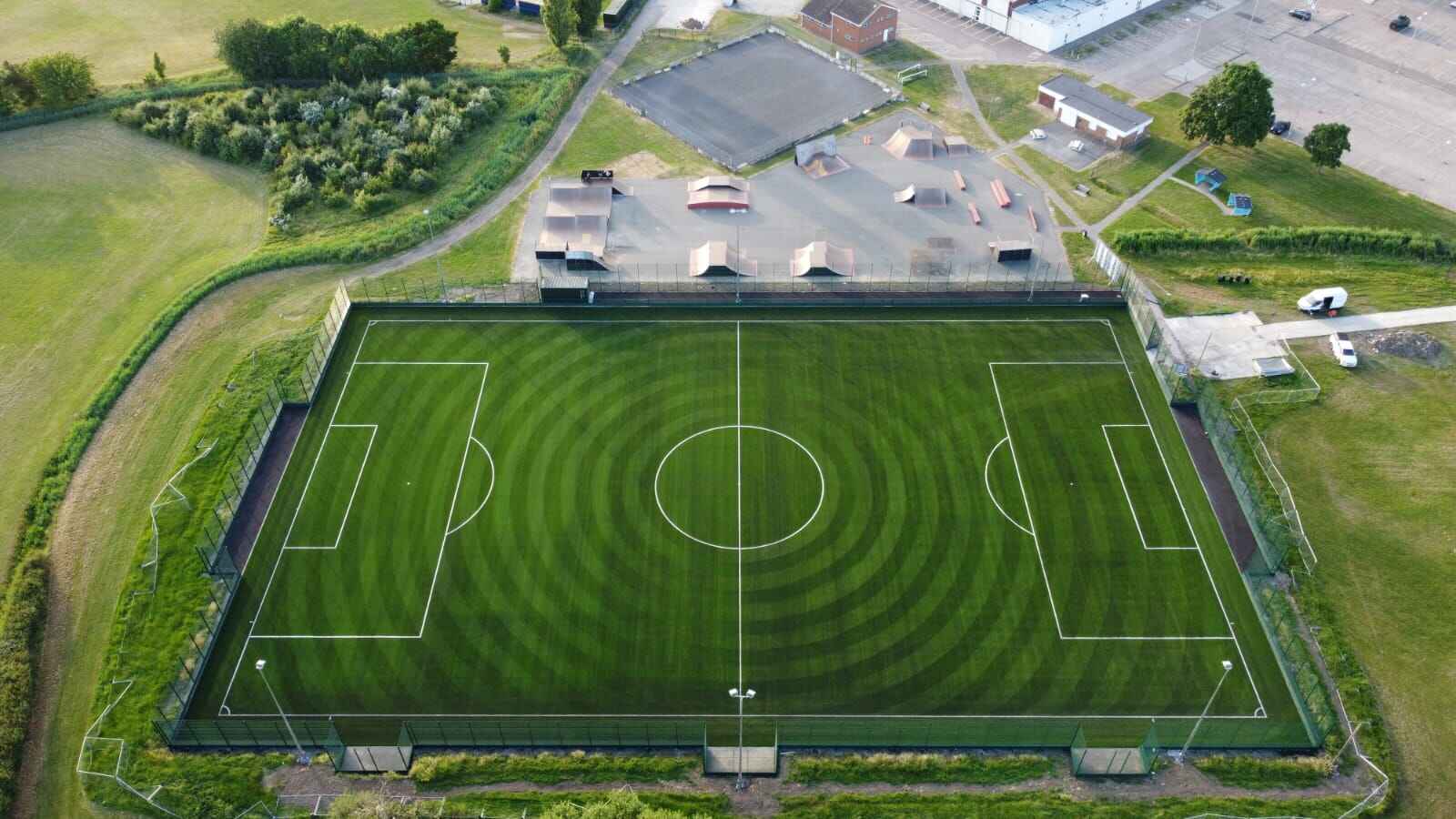
What is a 4G football pitch?
4G football pitches consist of an artificial playing surface that is made from synthetic turf laid onto a dense, shock-absorbing base-layer. As the surface is relatively dense, it does not require any sand or rubber infill like 3G pitches. Instead, using a “yarn and tuft” design, 4G pitches are said to replicate the look and feel of a real grass pitch more closely than 3G, without the need for rubber pellets or sand infill. 4G pitches tend to be denser than 3G pitches.
A major issue with 4G pitches is that they have not been officially recognised or defined. As outlined by the quote displayed below, 4G pitches are not acknowledged by the FA and most major sports governing bodies.
“At the moment there is no such thing as 4G or 5G, terms sometimes used by sales-people. Some manufacturers may promote non-infilled products, but these have not received acceptance as a suitable football surface and often struggle to satisfy FIFA requirements.”
The FA – Third Generation Football Turf Guidance
What is a 5G football pitch?
At the time of writing, there is no official accreditation for a pitch to be called “5G” and they are not recognised or allowed for use in games regulated by FIFA or the FA. Most manufacturers state that 5G pitches have a rubber infill – rather than no infill or sand & rubber infill with 4G and 3G pitches respectively. The rubber infill is said to replicate the bounce and feel of a real grass football pitch more closely.
What is a hybrid football pitch?
Hybrid football pitches are natural grass pitches that are ‘reinforced’ with the use of synthetic grass fibres. Hybrid pitches are usually installed by injecting the synthetic fibres into sand within the root zone of existing natural grass, or by laying an artificial grass carpet and interweaving it into the natural surface. Said to be 95% natural grass, this type of football pitch is used at Wembley and is said to make the grass significantly more robust – meaning no bare or muddy patches, even when the pitch is used frequently.
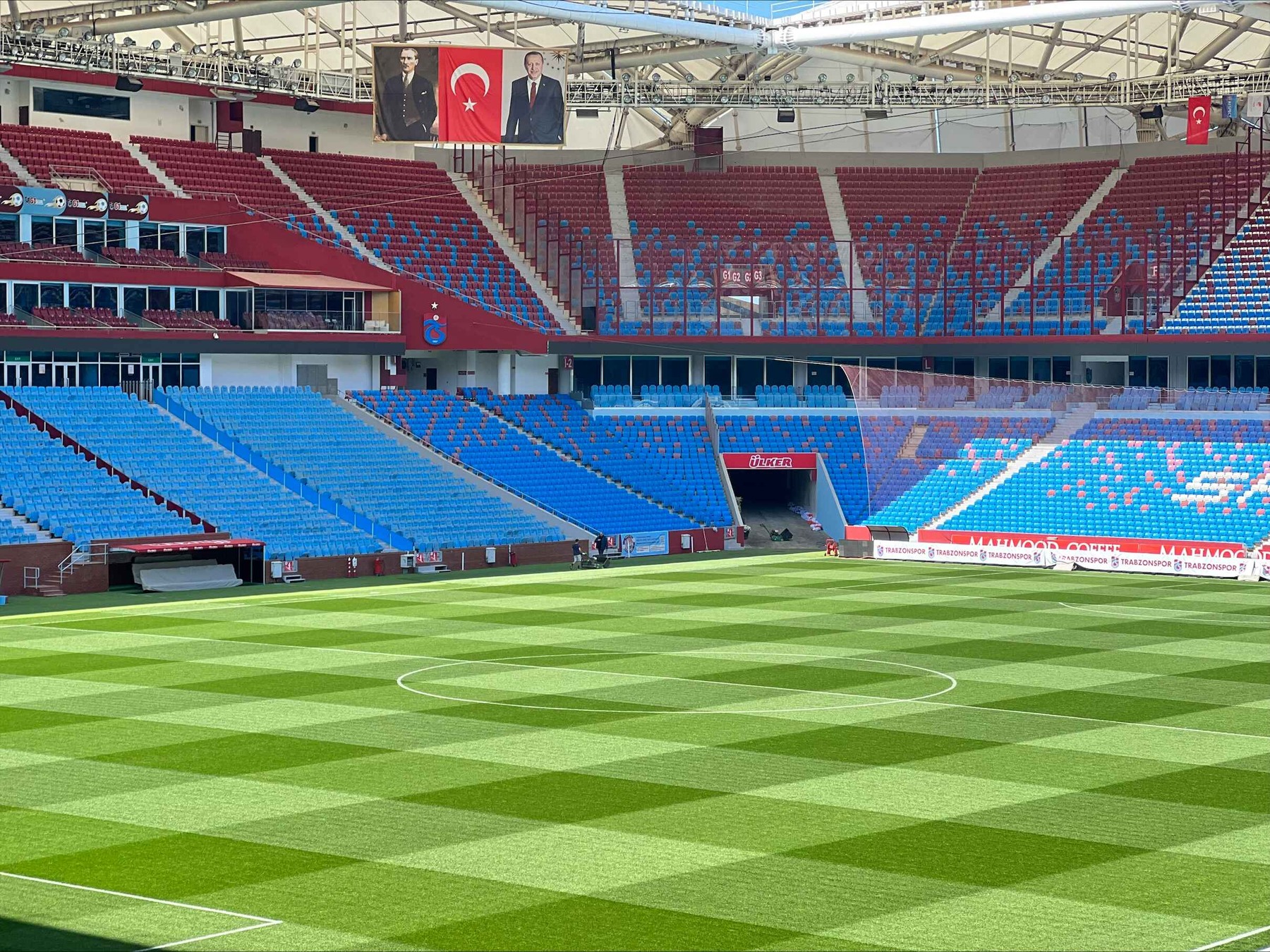
Other Football Pitch Playing Surface FAQs
What boots can you wear on artificial pitches?
Boots with metal studs are not suitable for artificial pitches due to an increased risk of injury and the potential to damage the playing surface. Instead, either astro turf trainers, boots with moulded circular studs or FG boots with small blades can typically be worn on artificial pitches. Indoor boots, designed for 5-a-side games, don’t provide the ideal amount of traction and so players who wear them will often struggle to get traction on the surface which will directly impact their footing and ability to stop and turn.
Do you need a different football for artificial pitches?
Standard football balls can be used on artificial pitches, however, you can purchase football specifically designed for use on AstroTurf and other artificial playing surfaces. For 2G, 3G and 4G pitches it’s fine to use a standard football as the softer surfaces won’t damage the ball.
Do artificial pitches freeze over?
Snow and ice can make an artificial surface, like a 3G pitch; unsafe to play on. Artificial pitches tend to freeze and become dangerous at lower temperatures than natural turf pitches. Most artificial surfaces will freeze at temperatures under -4°C, whilst most natural football pitches freeze at 0°C.
What grass is used on football pitches?
Perennial ryegrass is the grass of choice for football pitches. Known for its ability to germinate quickly, and recover faster than other grasses following the wear and tear of a football match, most top-level football clubs use perennial ryegrass on their pitches.
Which football clubs have artificial pitches?
At the time of writing, there are no professional clubs in the UK using an artificial pitch. However, Wembley Stadium and almost all Premier League clubs use hybrid playing surfaces. Hybrid pitches are said to be 95% natural grass & turf, with the remaining 5% consisting of polyethylene fibres which reinforce and protect the natural surface.
Which companies create & install artificial pitches?
There are a number of companies that specialise in the manufacturing and installation of artificial sports pitches. World-renown experts, SIS Pitches are the leading supplier and installer of natural and artificial pitches for sports including football and hockey. Based in the UK, SIS Pitches operate around the world, installing a wide selection of hybrid and artificial sports pitches, including a first of its kind water-based hockey pitch at Loughborough University, and a new hybrid/natural pitch at FC Copenhagen.
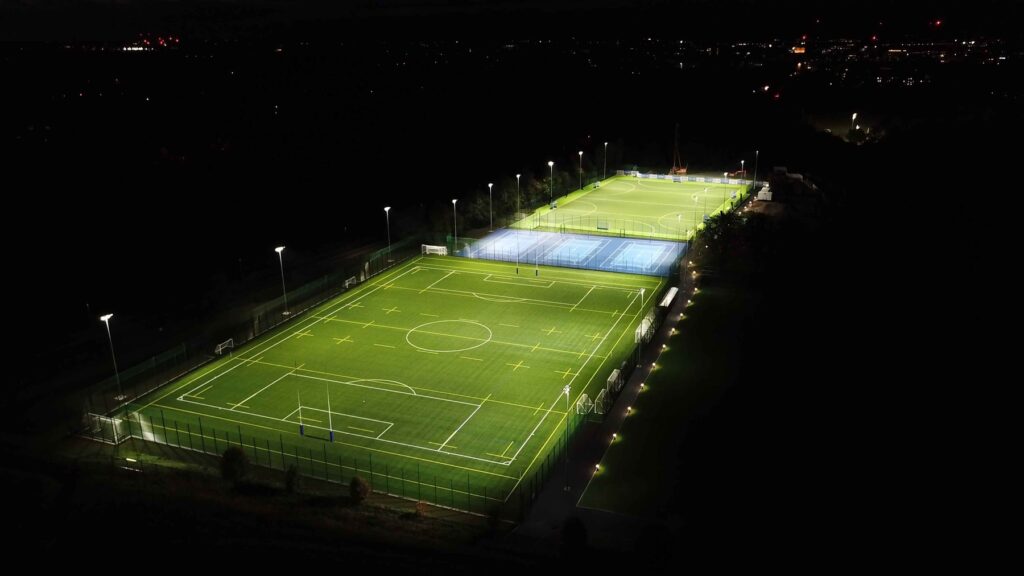
Can you buy football equipment that is designed for use on artificial pitches?
Yes, at Net World Sports we supply a wide range of ground and training equipment that has been specifically designed for use on artificial pitches. Ground equipment includes crowd fences & barriers and team shelters, whilst the football training equipment includes AstroTurf Football Mannequins, agility slalom poles and cones.
Where can you buy ground equipment for an artificial football pitch?
At Net World Sports, we supply a wide range of football ground equipment suitable for both natural and artificial football pitches. Our football ground equipment includes ball stop nets, team shelters, corner flags and crowd barriers.
We also stock a huge array of football goal posts, in various sizes, designs and materials. Our range of FORZA football goals includes ProFlex pop-up goals that can be set up within seconds, galvanised steel goals with 3mm UV stabilised HDPE nets and professional-standard aluminium football goals manufactured from 60mm reinforced aluminium with welded corner-joints.
Perfect for training sessions on any pitch surface, we also sell a wide range of football training equipment, football rebounders and target football goals. If you are a groundskeeper of a natural turf football pitch, we stock pitch marking equipment, including grass-seed, line-marking paint and line-marking machines.
By: Andrew Griffiths
